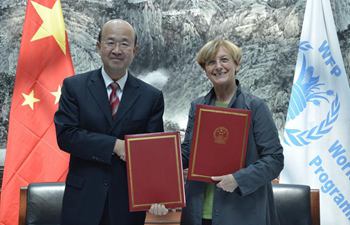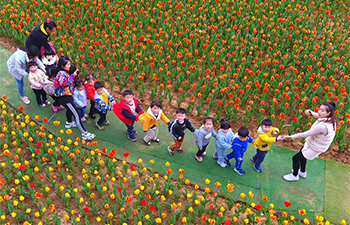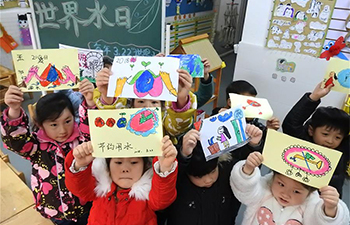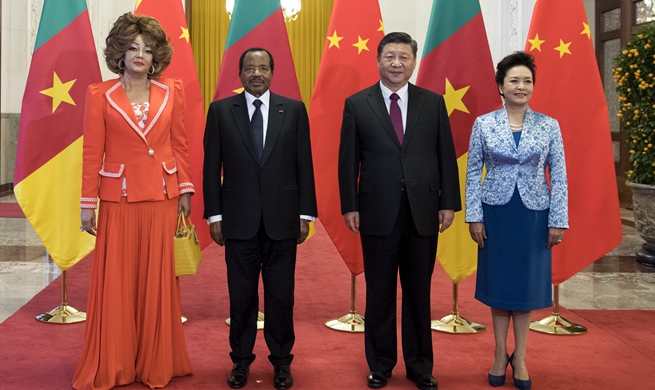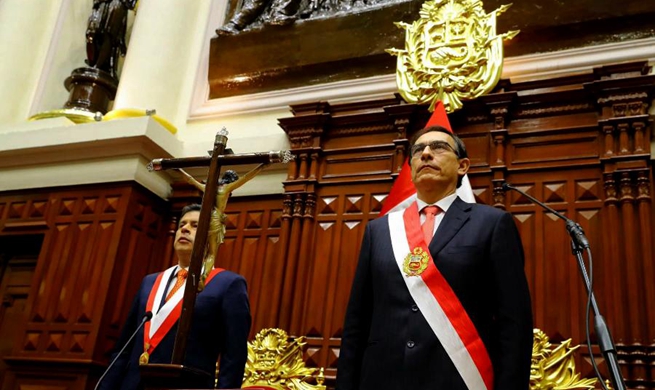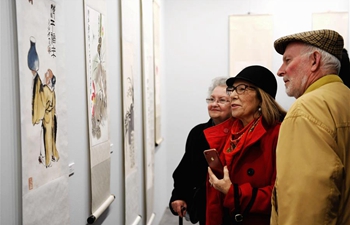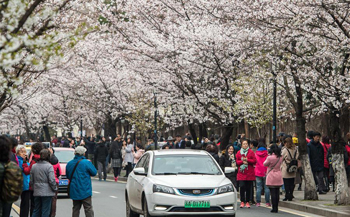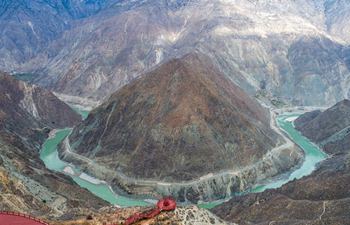By Xinhua Writer Guo Ying
BEIJING, March 24 (Xinhua) -- Fu Haohuan and his team are using the world's fastest supercomputer to forge ahead China's research on Earth system science.
With a strong academic background in computer science, Fu joined the Department of Earth Science Systems at Tsinghua University in 2010 and has been conducting interdisciplinary research in the two areas.
"I think research across boundaries may prompt new ideas and has great potential to generate revolutionary technological innovation," Fu said.
In 2017, Fu's team used the world's fastest supercomputer, Sunway TaihuLight, to simulate China's Tangshan earthquake in 1976. They achieved great efficiency in performing the simulation and creating 3D visualizations of the devastating earthquake, which will help improve earthquake modeling and preparedness.
Their research won the 2017 ACM Gordon Bell Prize, nicknamed the "Nobel Prize" of supercomputing applications.
Fu's team is now using the supercomputer to conduct a simulation of the Wenchuan Earthquake in 2008, which he believes is "a more challenging research problem" considering the more complex geological structure and the landslides the earthquake caused.
"This calls for more interdisciplinary research and talent from the intersections of dynamics, geology and engineering," Fu said.
China implements national strategies for innovation-driven development, and interdisciplinary research has become an important path for obtaining high-level innovation results.
In January, the State Council issued a guidance on intensifying basic research, encouraging interdisciplinary research, and balanced and coordinated development of basic disciplines and applied disciplines.
"China will promote the construction of national centers of interdisciplinary research," said the guidance.
MORE PLATFORMS
More interdisciplinary research platforms and projects have been launched across China's universities, institutions as well as enterprises.
In December 2017, Tsinghua University established the Tsinghua Laboratory of Brain and Intelligence (THBI) and the Future Laboratory, both platforms to promote interdisciplinary research.
Wang Xiaoqin, director of the THBI said brain science is a discipline where engineering and life sciences intersect to a high degree.
"The THBI will make the most of Tsinghua's advantages in these subjects to explore the complex issues at the frontier of brain science, and to promote fundamental research in AI," Wang said.
Peking University set up an interdisciplinary research center for medical studies and information science in January.
Zhan Qimin, vice president of Peking University, said medical science can be a platform where a variety of cutting-edge disciplines intersect.
Fu, also deputy director of the National Supercomputing Center where Sunway TaihuLight is located, believes that the supercomputer itself is a platform for interdisciplinary research.
"Scientists from different disciplines may harness the computational resources to advance their research. More than 100 institutions have used Sunway TaihuLight in more than 60 research domains," Fu said.
NURTURING TALENT
He Conghui, a PhD student at Tsinghua, is also a member of the research team that won 2017 ACM Gordon Bell Prize. He is devoted to the intersection of earth system modeling and high performance computing.
He said that interdisciplinary research does not simply mean researchers from different disciplines working together to solve a problem.
"Only when you have mastered the knowledge of different disciplines can you put up constructive ideas and develop critical thinking ability," He said.
As a computer science major, He has stepped out of his "comfort zone" and started to study Earth system science.
"I also benefited a lot from the open seminars that draw experts from different countries and different disciplines together. The brainstorming has generated a lot of inspiration and the culture of collaboration is vital for interdisciplinary research," He said.
Fu compares talent in interdisciplinary research to babies growing up in a multilingual environment.
"They may have difficulties at the beginning but they have more potential to master different languages," Fu said.
Fu believes that China has a large talent pool for interdisciplinary research.
"China abounds in talent with solid knowledge of mathematics and physics, some of which are open-minded and willing to broaden their academic horizon," Fu said.
INSTITUTIONAL REFORM
Fu said conducting interdisciplinary research means choosing a different path and researchers may face institutional challenges as well as academic risks.
"Sometimes we feel that we are caught between different departments and we don't know where to apply for research funds," Fu said.
Tsinghua University has rolled out measures to improve the management, cultural environment, support systems, and organization of interdisciplinary research.
According to Qiu Yong, president of Tsinghua, the university has set up a working committee to promote interdepartmental cooperation and leverage university resources in support of interdisciplinary research projects. It has also secured funding for this purpose.
"We allow teachers to work part-time in different departments and schools. In addition, we have also set up an interdisciplinary degree system," Qiu said.
These institutional reforms have reassured Fu.
"We are greatly inspired as we are given more support and space in conducting interdisciplinary research," Fu said.






